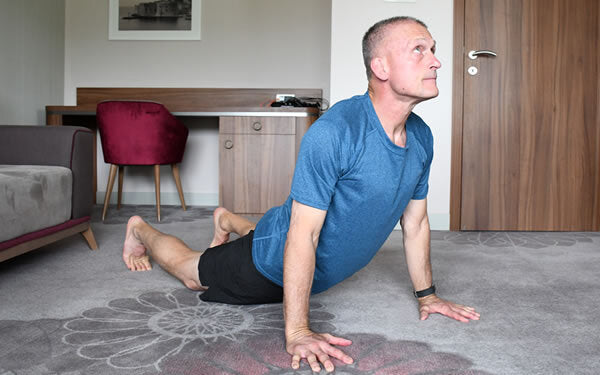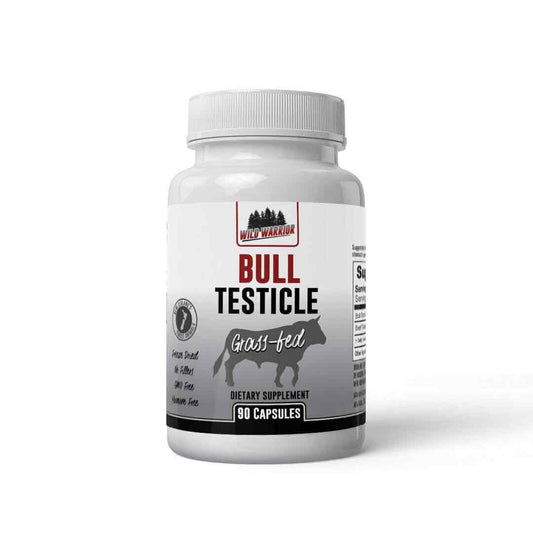This post originally appeared on MaxwellSC.com here.
Steve Maxwell is one of our favorite strength and conditioning coaches. The following are excerpts from an article of Steve’s where he address how men over 45 should approach their training.
Much of his advice will hurt your ego, as Steve’s advice to people over 45 largely has to do with accepting limitations and changes the come with life over 40. Anyways, we encourage you to think about Steve Maxwell’s advice and to adjust your training accordingly.
If you’re interested in changing the way you train, we highly recommend you checkout Steve’s fitness programs (get them here).
Strength Coach Steve Maxwell. Fit and spry in his 60s.
Steve Maxwell’S Thoughts on fitness and training after 45
Most men (and women) suffer from unrealistic expectations about what they can or cannot achieve through physical training. This is perpetrated by the muscle-and-fitness media industry. 90% of the stuff published in so-called fitness and health/fashion magazines is complete rubbish -- which do not work -- cannot work -- no matter how you apply yourself, if only to keep you coming back for next month's edition or iteration.
This is because the promised results satisfy the expectations -- which are unrealistic.
It doesn't matter which program you follow: pretty much, they all come to the same place within about 4-5 years. If you've been training over 5 years, what you see now in the mirror is what you get; very few people have the genetic propensity for huge muscular gains.
While everyone can improve their strength, their health, and, to a certain degree, their muscle mass -- it is far less than you might imagine, and if you've been lifting 4-5 years, you've pretty much maximized whatever potential you have.
There are some exceptions: for example, there are people who have grossly over-trained, thus preventing adequate recovery, or people following imbalanced programs who have never developed certain areas, and these people may see dramatic improvements when switching to a rational, balanced program, but, even then, these improvements will stabilize within a year or so.
Most people, even if taking steroids, are not going to see marked improvements. For sure, you are going to see some growth, but even that is going to be short-lived and comes at a cost. Contrary to the popular sales-pitch, you cannot "get over" in this game; you cannot "beat the house".
While most men do not have the genetic ability to acquire huge muscle mass and corresponding amounts of strength, the muscle magazines would have you believe that human beings have an unlimited capacity for gaining muscle mass, and size, and Herculean strength. This patent lie creates a lot of unhappiness, that is, worry, and frustration, and neurosis.
Because we have all been fed this lie, and it's simply not true, and when you come to terms with that, then you can quietly come to appreciate your own particular gifts and individuality -- and yes, assets, that were given to you -- instead of continually chasing this false dream that has been suggested to you.
One thing you do have control over is your level of body fat; most people can get reasonably lean, even if they can't get hugely muscular.
While most programs will pretty much get you to the same place, be it barbells, kettlebells, body weight, gymnastic-style training -- even machines, not all programs are equal.
First of all, with a beginner, any God-awful program will produce results. It doesn't matter -- with anything at all -- you'll get results.
And then, after that, the results come very, very slowly. And this is when people get disappointed and begin to "program-jump" -- but this is a huge mistake.
Everything works: Olympic lifting works; powerlifting works; traditional volume-style works; in-the-hood style works, gymnastics works...and it all works for a time...but switching from one program to another -- once the results start drying up -- that's a mistake.
You seemingly, on the surface, make progress on the new routine, but that is only because you are learning new movements. Because "if" after a few months you go back to your old routine, you will find that you have lost ground in all of your previous exercises. The truth of the matter is -- over your entire life -- you never need more than a dozen basic exercises, and, within this limited number of exercises, you can use different protocols.
Now, even though everything works, and will bring you eventually to the same place, not all programs are equally safe. First of all, you have to ask yourelf, why are you training? Is your training an end unto itself -- is it your sport? Are you training to be good at exercise, or are you training to be good at some other recreational pursuit?
If you are training to be a weight lifter, powerlifter, strongman, or to perform various gymnastic stunts and feats, then, obviously, your training must be centered around these goals...but, I maintain that this form of training is not the best way to train yourself for other recreational activities and sports -- or for health and longevity.
A good workout -- a really good strength workout -- can be completed in between 20-30 minutes, even less if it's intense enough. I like to use a job analogy: all strength-training workouts take you to about the same place, more or less, in about five years, approximately the same muscularity, and body weight size and strength, but some guys are spending a couple hours at the gym everyday, versus other people spending as little as an hour at the gym every week.
Once you've reached your mid-forties, you are merely trying to hold onto what you've built over your lifetime thus far; you are 100% in maintenance mode. This is a very fearful thing for a lot of guys to hear. Especially, if they were never that muscular and strong to begin with.
The idea that their time has passed, for PRs, and muscular increases, is a depressing proposition. But you shouldn't be depressed, or ungrateful, because it could get a lot worse! For example, you could end up like Memaw and Pepaw, limping around with a cane, walker or wheelchair.
If ever there was an incentive to continue with one's training, it would be to prevent ending up like the old folks. You've heard the saying "Use it or lose it"? Well, even if you use it, you are going to lose it, but you can slow the loss down to a trickle.
So, in training, what does NOT matter?
The amount of weight, and the number of repetitions; i.e., mechanical work, doesn't seem to matter that much. More important than how much or how many is HOW you perform each repetition -- that matters a lot.
A lot of heavy lifters -- who lift for the sole joy of "how much" they can lift -- might want to argue with that, but ultimately, the amount of weight lifted is very much tied into injury-potential.
If your whole focus is bent on how much weight and how many reps you can do -- for your whole life -- you are going to be in a very big shock in your 50's and 60's and are going to have to come up with other motivating factors.
So, what does matter?
What matters after 40 is:
-
form -- the technique
-
Intensity of effort -- how effortful the exercise is
-
time under tension -- (“TUT”)
It's fairly well-known that people can get away with bad form and achieve good results, as far as size and muscularity. While you'll see plenty of big, strong, and muscular guys throwing and heaving weights around the gym, you won't see many of them doing in their 50s and 60's, because most are no longer training at that point, because they are too busted up, or they have repented, and changed their way of thinking to the more realistic way I am talking about.
You can avoid: knee-replacement, hip-replacement, and spinal surguries by adopting the principles I am talking about.
People make great gains on heavy-weight /low-reps, medium-weight/ medium-reps; light-weight/ high-reps. The research shows that it doesn't really seem to matter...and this is also my own observation. You will see amazing specimens using all manner of high-repetition/ low-weight body weight movements who look great, right up there with power bodybuilders and powerlifter, who also look amazing.
It all comes down to what is sustainable over a lifetime. For me, slow, high-tension reps, performed with a weight I can control, over a moderate time-under-load, that is, somewhere between 40-90 seconds. Science has shown over and over again that TUL is the single most important factor.
I'll give you an example: I was in a gym and I saw a young, muscular fellow with pretty impressive upper body development, and he made sure to have his shirt off -- so everyone could see that he did -- and he proceeded to knock out 21 pull-ups -- which is pretty much the gold standard for pull-ups, if you're into those kind of numbers.
This is an old military standard that was developed for measuring upper-body mechanical work.
But, his form was a little rough; while he wasn't outright kipping, it was pretty fast, with some bouncing and jerking in there, and each rep was probably about 2-seconds. I estimated his TUT probably about 40-seconds or so.
Afterwards, I saw the guy rubbing his elbow and complaining to his buddy that his shoulders were bugging him. And this kid was only in his early twenties.
I was training a client -- a young fellow -- and I instructed him to do the same exercise, but use a very slow, high-tension rep speed. He pulled himself up slowly, with control, in about 4-seconds, paused and squeezed at the top, for 2-seconds, and slowly lowered hmself down over another 4-seconds, with a smooth turnaround at the bottom before changing direction. Each rep was about 11-12 seconds and he managed to get five reps, which is pretty impressive at that rep-speed. His TUL was around 60-seconds.
So, despite having only done five repetitions of mechanical work, his TUL was greater than the guy who did 21 reps, and the mechanical stress on his jonts and connective tissues was far less. In fact, he exclaimed to me how good his shoulders and elbows felt after the set.
My point is, "How" you perform these exercises is more important than "How much" or even "How heavy", and that you will get as much value and results from this type of training as anything else, and you'll still be able to train throughout your lifetime without injury, or pain, or unnecessary suffering. In fact, this type of training helps alleviate pain, and can be used therapeutically. I have a lifetime of injuries from wrestling and BJJ and the accompanying aches and pains that go along with that, but after doing slow, high-tension reps, or even isometrics, my joints feel great and I am pain-free for hours, even days. You can't play combat sports or rough activities and not expect to be hurt; you accept that as a reality going in, but your (strength) training should never cause those same injuries, and, if done right, can even offer relief to aching body parts.
What keeps me training, isn't motivation, so much as discipline. I train because I don't want to end up old and feeble and unable to locomote; I keep my muscles strong so I can locomote and move.
One's mobility is directly related to strength through full-range -- but I also do it as a discipline, because I know it's good for me, and I know I should. I also train for the sheer animal-joy of moving my body. Animals train and stretch and play because they like it -- because it makes them feel good -- and if they are deprived of this, they suffer terribly.
I had a little ferret once, and we named him Buster. Ferrets are really, super-playful, curious little fellas, very much like otters in that respect.
Buster was playful right up until the day he died. It was really funny, because we could see him gradually declining in the things he used to like to do, like jumping up on one of the steps, and climbing over a pet gate-barrier we had installed to specifically keep him out, but he had learned how to negotiate the obstacle.
During Buster's eight year (which is really like an old man in ferret years, something like 80 years) I observed Buster still attempting to do a lot of the same stuff he used to do, and failing, but that didn't keep him from still going out there, and playing, and being curious, because that was his good animal nature, and he remained playful right up until the end. We found him dead with one of his little toys. I think this is also in our human animal nature, and just because you are not able to lift the same weight, or perform the same reps, it doesn't mean that you should just stop, and be all disappointed about it; you should still get out there and do what you can do, obviously in a safe manner.
I want to be like Buster, and I'm just going to keep playing until the day I die. Even though his body was betraying him, and he could no longer jump the fence, and he was a ferret, not a higher nature, he remained true to that.
Strength training allows me to play, but I don't mistake play for proper training.
One of the things I want to say about weight lifting is this:
At what point do you surpass your structural strength?
If you've never lifted weights and you start in your fifties and sixties, you will make gains. You can make gains at any age if you've never lifted before. If it's virgin muscle, you can rapidly gain hypertrophy and strength at any age; but, once you've been lifting for a few years, that's pretty much it. You can also rapidly re-gain muscle, if you've taken a layoff -- I wanted to mention that. But anyone who's been lifting steadily and progressively for 4-5 years, that's pretty much it...but people don't want to hear that. You really are limited...by natural law.
Another point I want to make:
People in the sport of weightlifting or powerlifting, are often able to continue to make sllight gains -- slight increases in lifting performance -- for many years...but that is not what I'm talking about. This is due to developing better technique, not because they have gained any muscle or strength per se, and that can continue for a long time, but still, this is going to be limited, and even then, in their fifties, this will start to reverse itself.
But Steve, I continue to add weight to my bench! And I'm 45 years old!!
And yes, this is true, but it's because you are getting more efficient at the bench, not because you are necessarily any stronger or anabolic.
Here's the thing: If you have already built some muscle, size and strength when you are young, you can retain a lot of it, (as long as you don't generally dissipate yourself) and you will age way more gracefully than people who do not lift weights. If you have never lifted before, and you are a late starter, you can still gain muscle, size and strength; you will be more limited than if you had started young, but there is no reason to not do your best and get real results.
Think of strength training like saving money in the bank: you are storing up vital energy and strength, and educating your muscles to do your will, and you can draw upon this as you get older. A lot of people think that when you lift weights that you are just working muscles, but in truth, you are stimulating the endoctine system, internal organs, getting a tremendous cardio response -- proper strength training is some of the best cardio you can do.
Every muscle is connected to every organ and gland via the nervous system, so you are really toning and conditioning the entire body; it's not just some isolated muscle-thing going on there.
For healthy aging, there is no replacing good strength training, but you have to stop thinking like a twenty year old -- think of it as maintenance and tonic. Just because you are never going to see a PR on the bench or deadlift, there is no reason to stop training. As a man or woman ages, it is even more important: because you are training for your life, and not your ego. Your "kiss my pec and bicep" days may be gone, but that's no reason to stop.






